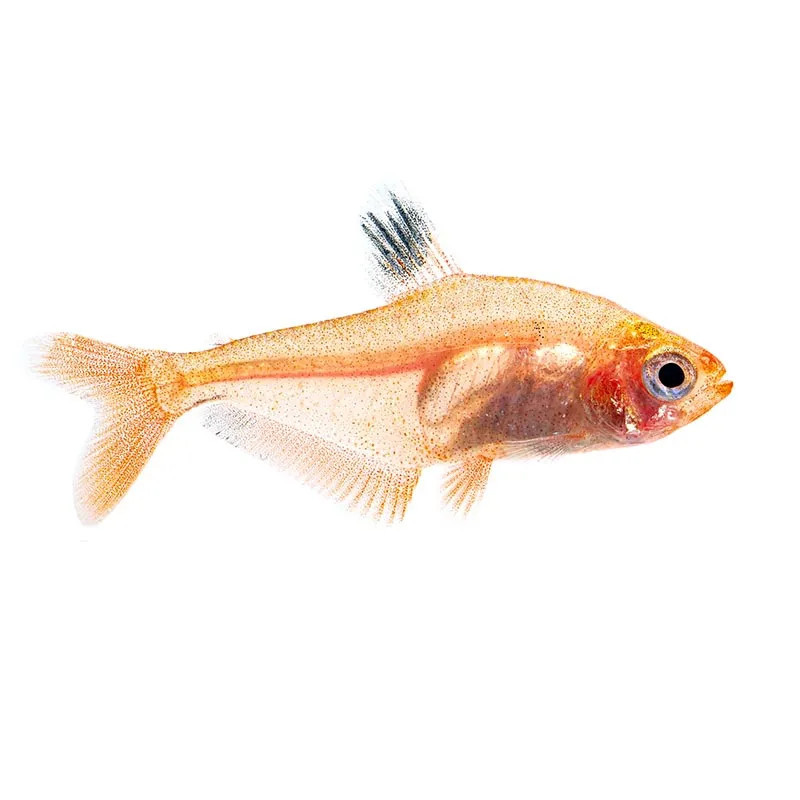Stocks Available
Blackberry Silver Doller
SKU:128923
Myleus schomburgkii
2.5 INCH

Stock Available
Introduction • Common Names: Red Minor Tetra, Serpae Tetra • Native Habitat: Found in slow-moving rivers, streams, and floodplains in South America, particularly in the Amazon Basin. Physical Characteristics • Appearance: The Red Minor Tetra has a striking red to orange body, with a black shoulder patch just behind the gill cover. Its fins, particularly the dorsal and anal fins, are often edged with black, giving it a sharp, distinguished look. The vibrant red coloration intensifies when the fish is healthy and well cared for. • Size: They can grow up to 1.5 inches (4 cm) in length. • Lifespan: With proper care, they can live for 5 to 7 years in captivity. Habitat Requirements • Tank Size: A minimum of 20 gallons is recommended for a small group, though larger tanks will allow for better social behavior and a healthier environment. • Water Conditions: o Temperature: Optimal water temperature ranges between 72-82°F (22-28°C). o pH: Prefers slightly acidic to neutral water, with a pH range of 5.5 to 7.5. o Water Hardness: Soft to moderately hard water (2-15 dGH). • Aquascaping: These tetras thrive in tanks with plenty of plants, driftwood, and hiding places. Floating plants are also recommended to diffuse the light, mimicking their natural habitat’s dappled lighting conditions. Diet • Primary Diet: Omnivorous by nature, Red Minor Tetras will readily accept high-quality flake food or small pellets as their primary diet. • Supplemental Feeding: To enhance their vibrant red color, supplement their diet with live or frozen foods such as brine shrimp, bloodworms, and daphnia. • Feeding Frequency: Feed them 1-2 times daily in small amounts, ensuring that all food is consumed within a few minutes. Behavior and Compatibility • Temperament: Though generally peaceful, Red Minor Tetras can exhibit semi-aggressive behavior, such as fin-nipping, especially if kept in small groups. Keeping them in larger groups of 6 or more helps disperse aggression and encourages more natural schooling behavior. • Suitable Tank Mates: Compatible with other robust, peaceful fish such as Corydoras, Plecos, and other tetras. Avoid keeping them with slow-moving or long-finned fish, like Bettas, as they may nip their fins. • Incompatibilities: Not recommended for tanks with delicate or long-finned species, as they can be prone to fin-nipping, particularly when kept in insufficient numbers. Care Level • Difficulty: Red Minor Tetras are hardy fish and can tolerate a range of water conditions, making them a good choice for beginners. However, maintaining good water quality and a well-balanced diet is essential for keeping them healthy and vibrant. • Maintenance: Regular water changes of around 25% weekly are recommended, along with efficient filtration to maintain clean water and stable conditions. Breeding • Reproduction: Red Minor Tetras are egg scatterers and can be bred in home aquariums. • Breeding Tank: A separate breeding tank with fine-leaved plants or spawning mops is ideal. The water should be soft, slightly acidic (pH 6.0-7.0), and kept at a temperature of around 80°F (27°C). • Breeding Behavior: During courtship, the male will chase the female, encouraging her to release eggs, which he will then fertilize. The eggs are scattered among the plants. Once spawning is complete, remove the adults to prevent them from eating the eggs. • Fry Care: The eggs hatch in about 24-36 hours, and the fry become free-swimming after a few days. Feed the fry infusoria or specialized liquid fry food, gradually transitioning to finely crushed flakes or baby brine shrimp. Health and Disease • Common Issues: Red Minor Tetras are generally resilient but can be susceptible to common freshwater diseases like ich, fin rot, and bacterial infections, especially in poorly maintained tanks. • Prevention: Maintain stable water parameters, perform regular water changes, and provide a balanced diet to reduce stress and prevent disease outbreaks. Conservation and Sustainability • Wild Population: Red Minor Tetras are widely bred in captivity for the aquarium trade, reducing the demand for wild-caught specimens. • Conservation Status: Not currently listed as endangered or threatened. Most available specimens are captive-bred, ensuring sustainable availability. Conclusion The Red Minor Tetra is a vibrant, active fish that adds a splash of color and energy to any community aquarium. While they are easy to care for, their semi-aggressive nature makes it important to choose tank mates wisely. With proper care, diet, and tank conditions, Red Minor Tetras can thrive and display their vivid coloration beautifully.
Data sheet
16 other products in the same category: